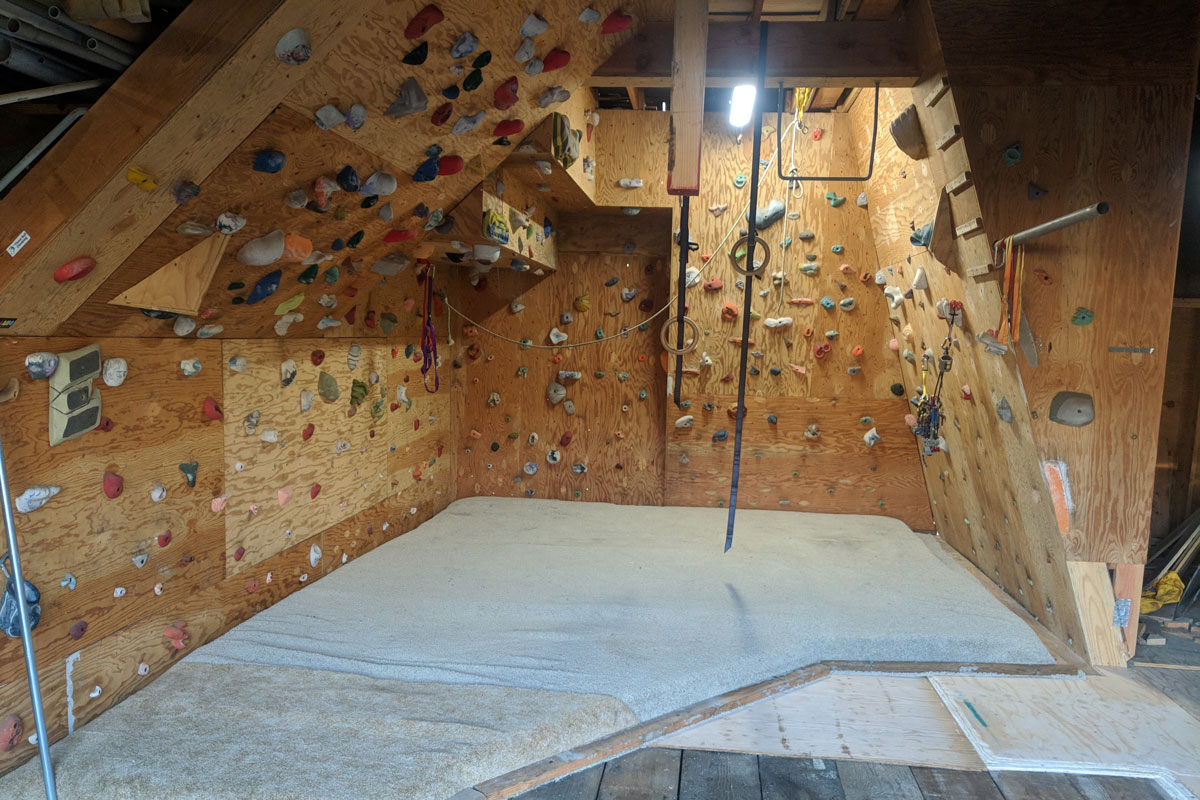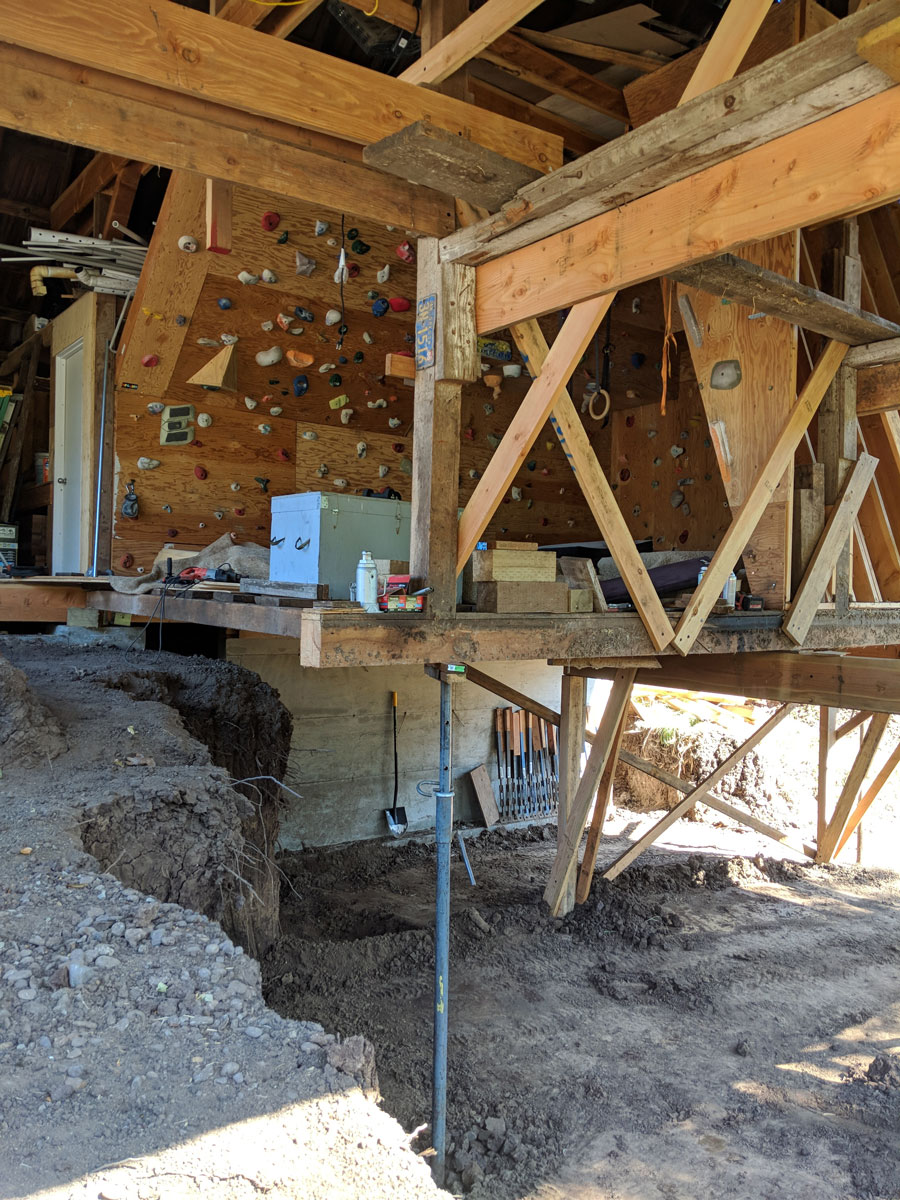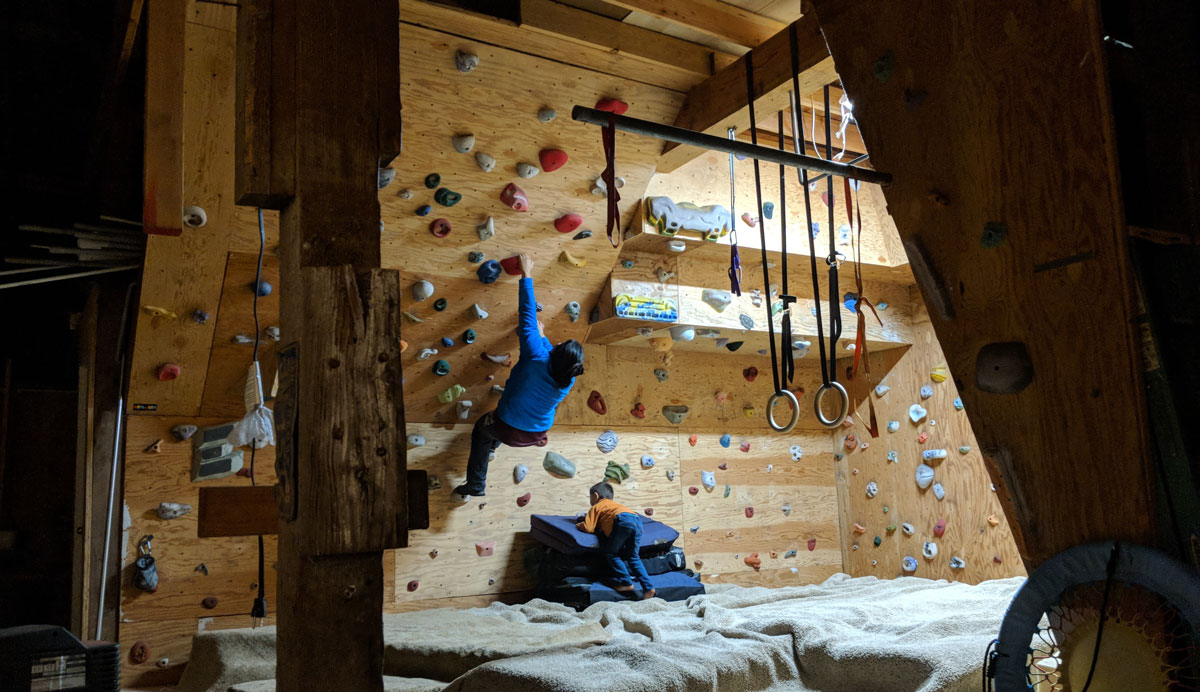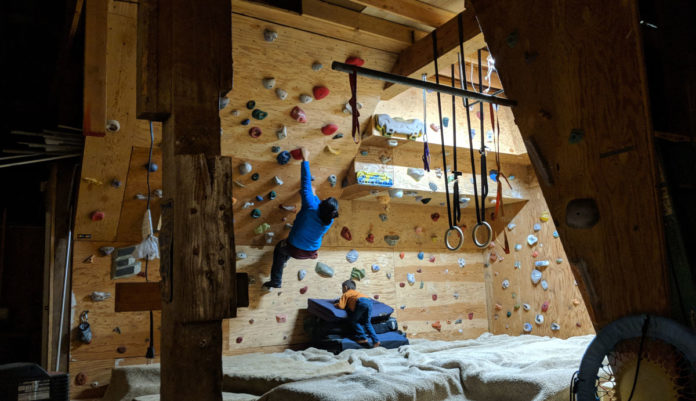Over the course of 11 years, Joe S. has made 5 separate remodels to his bouldering barn in Springfield, OR. A campus board, ring setup, and multi-angle structure make this once dilapidated barn the ultimate, rustic training dojo.

When did you build your wall? Was it a COVID baby?
The wall began in 2009, over the years it has seen 5 remodels/additions. I couldn’t resist missing out on all the Covid walls, so the Boulder Barn got an extra 7 sheets of plywood in August of this year.
How long did it take you to build and what did that time look like?
The initial wall did not take long no more than a few days. It was a pretty simple design using approximately 8 sheets of plywood. Early on I made every $ count and my wall design was more about using every Square foot of plywood. Each additional remodel saw more interesting terrain and thus more plywood scrap. The more complex the terrain the longer the building process took.
Not including holds and padding, how much did it cost you to build? Any surprises there? Most/Least expensive part?
I don’t think I have spent more than $500 initially and each remodel after that could not have cost any more than that. I think the most surprising thing is the increase in plywood cost. In 2009 ¾” ACX plywood cost $20 a sheet now its near $40 a sheet. To date the wall cost is no more than $2500.
What are you doing for padding?
We have installed a foam floor over the majority of the fall zones, fortunately our local bouldering gym had some leftover foam that they kindly offered up to the local home wall community.

What was your primary incentive for the wall? Did anything in particular inspire your wall design?
The primary incentive was for training and a place to hang out with friends. The entire wall design in each of its stages was inspired by existing gym walls, each remodel was an attempt to add terrain that inspired movement that the previous terrain did not offer. Most recently I have been inspired by the t-nut-less walls. This wall is in a temperate climate where the wood shrinks and swells on a daily basis and subsequently end up with spinners frequently, so transitioning to a majority of screw on holds seems to be the logical thing to do.
What was the most difficult aspect of the design and build?
The most difficult aspect was that I built the wall in a dilapidated 100-year-old barn that was literally on its last few legs. In 2015 we had a small earthquake that shifted the poorly supported barn into a precarious leaning position. The only thing keeping the barn from falling over was the climbing wall inside. At that point we had to make the decision to either tear the barn and wall down or save it. We chose to save the old barn and replaced its post and beam foundation with a concrete one.
What would you do differently?
Every few years there would be a list of things to do differently and then the wall would get a remodel. We just finished the fifth Major remodel, so it seems perfect now! Ask me in a few years and there will be a do different list again.
Did you make any mistakes along the way or choose to re-do any aspects? If so, what?
The one design mistake that I made was when I built a cave in the third remodel that when climbing out from the bottom went over a 3-foot-ledge that if someone had taken a fall would have badly injured themselves. It turned into a waste of space because we would only climb easy routes over the potential fall hazard which was completely opposite of the terrains intended use.

What is your favorite aspect?
My favorite aspect is the overall feel of the space. Lots of good lighting and keeping the walls unpainted along with some rough carpentry makes it feel raw and more like a traditional woody.
How often do you use the wall? Do you think you’ll still use it as much when all of the gyms open back up?
The wall has seen a lot of ups and downs over the last 10 years. It always saw lots of excitement after each remodel, and then it also saw several years of downtime due to injury. The wall gets almost daily use when we are home and has always been a great warmup tool before heading to the local gym.
Any words of wisdom to aspiring homewallers?
Start now! Creating a space for fun and self-improvement is good for your health.








